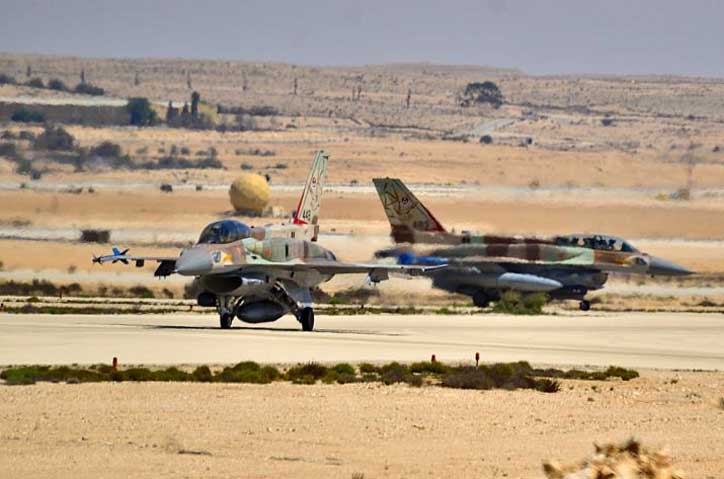 New Delhi:
New Delhi: The ongoing training exercise Gagan Shakti of the Indian Air Force (IAF) has demonstrated that it can put out double the number of fighter aircraft in combat compared to the Pakistan Air Force, should the situation arise.
Light combat aircraft Tejas, which had until now been only a technology demonstrator and was recently inducted into the IAF, participated for the first time in enhancing its operational capability, firing close combat and beyond visual range missiles, The Times of India reported. The IAF, which accepted Tejas Mark 1 into its fold, now waits for the improved Tejas Mark 1A and subsequently Tejas Mark II.
Air support, network-centric warfare, attack, counter attack and other parts of air force warfare in joint coordination is giving shape to the exercise, the report added. Maximum focus is to expertise on air to air counter attack and air to ground attack, it quoted officials as saying.
The Economic Times reported that "over 300 officers and 15,000 air warriors" are participating in the exercise, which also has the interoperability operations involving the Indian Army and the Indian Navy.
This exercise of the IAF is also being conducted to give a significant boost to the Make In India program, and will be a landmark for the indigenous aircraft development project, the report said.
As per the IAF Chief, Air Chief Marshal B S Dhanoa, IAF has achieved unprecedented serviceability levels of 80 per cent for its fighter aircraft during the exercise.
In an exclusive conversation with The Indian Express, Air Chief Marshal Dhanoa said that “full credit goes to our engineers that we have built up the serviceability of fighter aircraft to 80%, compared to a target of 75%, and a dispatch reliability of more than 95% during Gagan Shakti exercise”.
Considering the vintage of its aircraft and problems with availability of spares, IAF has struggled to maintain high serviceability levels, i.e, have a greater number of its fighter aircraft available for operations. Dispatch reliability is the IAF’s ability to make airborne the number of serviceable aircraft, a figure which has been lower during peace time.
Top IAF sources told The Indian Express that these numbers were significant as they demonstrated IAF’s capability to “overwhelm the Pakistan Air Force by bringing double their number of fighter aircraft in combat, and that too with significantly higher throw weight”.
At 70% serviceability for its 371 fighter jets, Pakistan Air Force is estimated to be able to bring approximately 260 aircraft into combat but they have lesser stamina and capability than their IAF counterparts.
As far as China’s People’s Liberation Army Air Force (PLAAF) is concerned, sources said the IAF had shown its ability to observe the PLAAF from dispersed locations, thereby reducing the probability of it being hit by Chinese missile strikes. Sources, however, conceded that PLAAF has an overwhelming superiority in the number of fighter aircraft and its ability to employ them is constrained only by the geography of Tibet.
The IAF currently has 31 fighter squadrons against an authorisation of 42 squadrons. Sources conceded that this shortfall remains a criticality because these high serviceability and dispatch reliability levels have been achieved after eight months of sustained effort. It would be tough for IAF to replicate these numbers, if it is asked to go into combat on very short notice. Most analysts believe that the most likely future military conflict involving India would be a short war at very short notice. To kick off the IAF from peace locations and provide overwhelming superiority in such a scenario, it would need a much larger number of fighter squadrons.
Exercise Gagan Shakti has also shown that the IAF can do long-range sorties where fighter aircraft taking off from bases in southern and western India can reach targets 3,000 km away, say inside Tibet. But sources added a note of caution about the reach of long range trans-theatre flying due to low availability of mid-air refuellers.
Sources said that Exercise Gagan Shakti was not about learning tactical lessons but focused on checking logistics stamina to build up and sustain the high serviceability levels. This physically validates the operating time and effort taken to rotate the fighter aircraft after it has made one sortie, fired all its weapons and turn them out again after loading them fully.
As per Air Chief Marshal Dhanoa, “This has happened due to support of the defence ministry and because of close cooperation with public sector units such as HAL and BEL. I have said it at the recent Defence Expo in Chennai and personally thanked HAL Chairperson Dr T Suvarna Raju for the tremendous support HAL has given for the buildup of this serviceability.”
 New Delhi: The ongoing training exercise Gagan Shakti of the Indian Air Force (IAF) has demonstrated that it can put out double the number of fighter aircraft in combat compared to the Pakistan Air Force, should the situation arise.
New Delhi: The ongoing training exercise Gagan Shakti of the Indian Air Force (IAF) has demonstrated that it can put out double the number of fighter aircraft in combat compared to the Pakistan Air Force, should the situation arise.